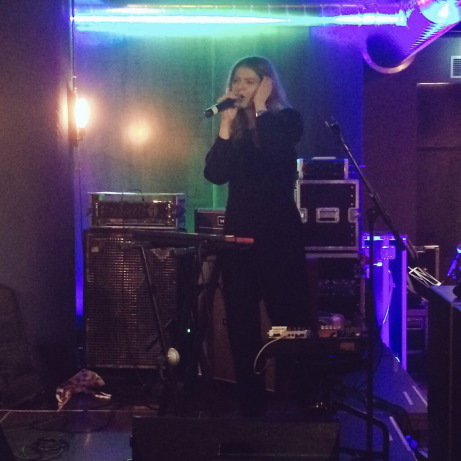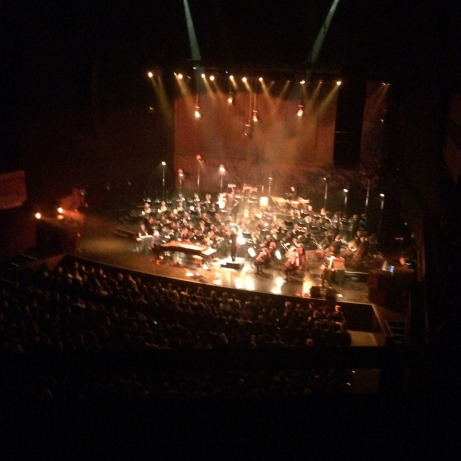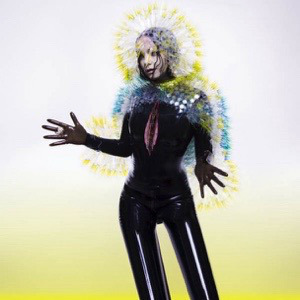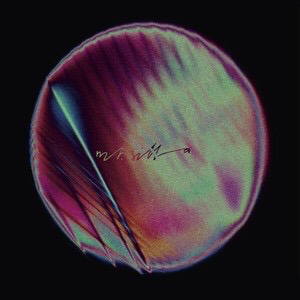Edward Hancox's Blog, page 2
June 25, 2016
Sigur Rós – Bristol Summer Series, Harbourside, Bristol, UK
Thursday 23rd June 2016
It could be said that Sigur Rós are ideally suited to this location. A stage on the banks of the tidal River Avon facing an impressive classical crescent building. The stage is set beneath a turret and weathervane, and on the river beyond, boats are moored and redundant cranes reach upwards. The clouds have cleared leaving a blue sky, in which the band have seemingly attracted several hundred Herring Gulls which wheel and swoop above the crowd.
It’s been a good week for Sigur Rós fans – a twenty four hour slow TV event of a trip around Iceland’s Route One soundtracked by the band to celebrate the summer solstice, a brand new song and video surfaced called Óveður and the world tour rumbles into the UK, including a much anticipated show at Glastonbury Festival.
There is an odd feeling about this tour. There is no new album to promote, so you could be forgiven for thinking this is some kind of ‘greatest hits’ deal. The only new material tonight is Óveður, which is a muted start delivered from the the back of the stage. The light show, impressive as it is, doesn’t work brilliantly in glaring sunshine. It’d just the three of them no string section, no brass. It’s not the most auspicious of starts.
Starálfur has been dusted off for this stripped back tour, but arrives too early and is almost missed by the restless crowd, some of whom have hardly even noticed the band’s arrival on stage. Even the seagulls can be heard squawking over the precious and fragile Starálfur.
Nothing really changes until the middle section of a slightly reworked Sæglópur, in which the band come to the front of the stage in an explosion of light and sound. Someone found the volume dial and turned it up. It’s a welcome change of pace, and grabs the attention of the crowd who momentarily stop chatting and munching burgers. Glosoli follows with a rich familiarity and accompanied by eerie shots of Iceland.
Festival was designed for such occasions and fairly bounces along. Yfirborð makes an appearance with its undercurrent of gaping alien-like noises. It’s not until Hafsól with its vibrating refrain that the band start to relax. It’s taken a while, but I swear I see a smile from Georg. Jonsí plays it as intensively as ever, often bent double, and even ruining a bow completely as the song reaches crescendo.
A brief but wonderful encore ensues. It is the traditional closer, Popplagið, and it is completely perfect. Jonsí delivers most his vocals with his forehead pressed against the mic, as if his thoughts could some how be transmitted out to the crowd. In a way, they do. Everyone is transfixed with Jonsí, but actually Orri and Georg are responsible for this driving, pulsing staple of the set. In any case, the new three piece set up makes the Sigur Rós sound more raw, more urgent somehow. By the time Popplagið implodes into feedback and and the lights flicker out, Sigur Rós have done their work here. The boys return for a celebratory bow and then they are gone.
Afterwards I find that a seagull has left me a little reminder of the concert on the back of my jacket. It’s not the only reminder. Happily, my ears are still ringing with the sounds of Popplagið.


March 23, 2016
Book Review: Thin Ice – Quentin Bates

They say that practice makes perfect. Thin Ice might just be the proof that this is really is the case. Thin Ice is the seventh appearance of Officer Gunnhildur at the hands of Quentin Bates, and each book improves on the last. Quentin is also the translator of the increasingly popular Dark Ice series from Ragnar Jónasson, something which can only have sharpened his crime writing skills.
There is a disclaimer to be inserted here. I know Quentin, and he was kind enough to proof read my own book (and offer some face-saving advice to boot). That doesn’t stop me providing an honest review of Thin Ice.
Thin Ice concentrates on Gunna and crew unraveling another difficult case, and although I suspect that Police in Iceland have a significantly easier time than both Quentin or Ragnar would have you believe, the story is always plausible with realism and plenty of coffee with everything! The Police procedure is also delivered with integrity; there are no heroics here, no skipping of paperwork – Gunna even applies for a warrant at one point and CCTV isn’t always crystal clear. This brings a pleasing resonance to the whole thing.
Similarly with the criminal element – Össur especially – scenes are descriptive and entirely believable. There is a hint of the dark humour of Fargo when their car grinds to a halt on a snow drift.
Does it matter that Quentin isn’t Icelandic? Not a jot. He’s spent so much time there he might as well be. His knowledge of Icelanders and Iceland help him deliver a truly remarkable and wholly satisfying example of Icelandic Noir. I’ll raise a cup of hot, black coffee to that!


February 1, 2016
Review – Ragnar Jónasson : Nightblind
Let’s get this out of the way. Ragnar Jónasson is a talented and expert crime writer. If you thought his first foray into the English language market, Snowblind, was good then you’ll love Nightblind.
It’s set five years after Snowblind. Ragnar’s believable and grounded Icelandic cop, Ari Thór Arason, is still in beautiful Siglufjördur, although still battling with his personal relationships. Tómas, Ari Thór’s boss has returned to Reykjavík, to be replaced with Herjólfur.
This doesn’t last though, when Herjólfur is attacked and shot in an abandoned, bleak house on the outskirts of town. Tómas reappears – of all the Police in Iceland – to help Ari Thór investigate this serious assault on a Police Officer. This is the premises of Nightblind, and the rest of the story twists and turns from here, often wrong-footing the reader but always remaining firmly within the bounds of reality.
Ragnar writes clearly and concisely, and is no doubt assisted by the experienced translator and crime writer in his own right, Quentin Bates. However, I think there is something else that Ragnar draws upon too. Siglufjördur itself.
Throughout Nightblind, and for that matter, Snowblind, Siglufjördur looms as large as any other character in the books. It is frequently referred to, and the reader becomes well acquainted with the locations and street names used throughout the book. Readers will find themselves gleefully flicking to the map at the start of the book to gain their bearings. This is no bad thing.
I’m not accusing Ragnar of cashing in on Iceland’s tourism boom for a second, but it’s noted that there is a Siglufjördur tour planned as part of this years Iceland Noir festival, and the wonderful snippets of Siglufjördur life that Ragnar posts on Twitter himself. Take this passage, for example, ‘He had come to appreciate the summer in Siglufjördur, with its dazzling bright days. He enjoyed the winter as well, with its all enveloping darkness that curled itself around you like a giant cat.’ If that doesn’t want to make you google house prices in Siglufjördur, I don’t know what will.

Photo from Ragnar Jónasson on Twitter
Ragnar ends by the book in a delightful manner, by providing a sample of writing from his grandfather. The fact that his grandfather was a writer is not a surprise, in Iceland it would be unusual if he hadn’t written anything, but it’s interesting that he wrote about Siglufjördur too. And it wasn’t half bad. ‘There is no gleam of sunshine to light up the inside of the high ring of mountains that encircles Siglufjördur. The winter sun disappeared, as usual, behind Blekkisfjall mountain on the 15th of November. After that there is only a faint glow to be seen the Hafnarhyrna and Hestsskardshnjúkur mountains, if it clear enough in the middle of the day.’
Nightblind is a thoroughly enjoyable and entertaining crime story, and I can’t wait for the next instalment of the Dark Iceland series. What really makes it so special though, is that Ragnar can transport readers to the cold yet inspiring streets of Siglufjördur in an instant.


January 14, 2016
The Best Icelandic Albums Of 2015.
5. Of Monsters and Men: Beneath the Skin
Beneath the Skin is a much more mature offering than their previous album, My Head Is an Animal. It still sounds like Of Monsters and Men, and still relies heavily on the partnership of Nanna Bryndís Hilmarsdóttir and Ragnar Þórhallsson, but things have changed. Gone are the nonsensical lyrics (no more pet dragonflies à la ‘Dirty Paws’) to be replaced with genuine themes and issues. The music, too, has changed, not drastically, but there isn’t a ‘Little Talks’ here, and it’s none the poorer for it.
4. Agent Fresco: Destrier
Five years since their last studio album, Icelandic favorites Agent Fresco return with a fresh offering, Destrier. Its one worth waiting for. Destrier is not an easy listen by any stretch of the imagination, but this is intelligent rock that plays on contrasts of loud and quiet, on heavy instrumentation set against Arnór Dan Arnarson’s falsetto vocals. This is no more evident than on the single ‘Wait for Me.’
3. Björk: Vulnicura
Vulnicura, meaning ‘Cure for Wounds’ in Greek (vulnus meaning ‘wound’ plus cura meaning ‘cure’) was snap-released to the surprise of fans and industry alike following an apparent online leak. The album quickly became the number one most downloaded album on iTunes in more than 30 countries, including the UK. The opener ‘Stonemilker’ is probably the most typical of Björk and closely related to songs from Homogenic. ‘Family’ has some seriously creepy string parts, at times sounding like an old-fashioned horror movie score, whilst ‘Mouth Maker’ has sounds seemingly borrowed from a sci-fi set. The album will take repeated listens, and is by no means an easy pill to swallow. No quick fix here. Unless, of course, you have been through a heart-wrenching, emotionally torrid breakdown of a relationship, in which case, Björk is here to help.
2. Sóley : Ask the Deep
‘Follow Me Down’ is full-on Sóley, and a stand-out track on the album. It starts off gently enough, but develops into something quite lovely, with Sóley pleading with the listener. It’s also a marker of the new: something so strong would have been out-of-place on the fragile We Sink. There also appears to be less reliance on sampling, and a more organic sound has been achieved. This is best seen on ‘Dreamers,’ with its delicious, twinkling piano. The closing piece is the utterly haunting ‘Lost Ship,’ which starts with something akin to a siren’s call through thick sea fog, before Sóley sings softly in a way that makes you feel quite uneasy.
Sóley has crafted something truly unique here. Ask The Deep is a thing of dark beauty.
1. Mr Silla: Mr Silla
Mr. Silla—the album— is a slinky, sexy affair, full of late night electronics and gentle, caressing vocals. This is no more evident than in the sultry ‘Reach for Me.’ “All I want is to just feel your touch,” Silla coos, “And see you blush.” The highlight though, is ‘Breathe.’ Full of delicious layers that are reminiscent of múm’s darker side, Silla delivers a vocal performance that manages to be both brooding and ethereal. With this sensual, alluring effort, Mr. Silla released the Icelandic album of the year.
Originally published in Iceland Review online.


December 8, 2015
Christmas is coming!
Thrilled to be featured in the Wenlock Books Christmas gift guide!
November 26, 2015
Music Review – Mr. Silla : Mr. Silla

Sigurlaug Gísladóttir wants to see you blush.
Ok, let’s get this out of the way. Mr. Silla is not actually a Mister, but the solo project of Sigurlaug Gísladóttir, who has performed with nearly every Icelandic act you can think of including Múm, Low Roar and Snorri Helgason.
Quite why she chooses to call herself Mr. Silla is a mystery, and twice as much now that her long-awaited album is called the same. It’s an album worth waiting for – I get the feeling that Silla is something of a perfectionist and wouldn’t release anything she wasn’t entirely happy with. The exquisite ‘One Step’ for example, has been a staple of her live set since 2011.
At this year’s Airwaves, Silla performed a delightful set at 12 Tónar that saw the tiny record store packed to the rafters, and fans queuing down the street or peering through windows to catch a glimpse of her. Rolling Stone and this very publication named it as a highlight of the festival. In hindsight, this wasn’t Silla’s natural environment. At a previous festival, she performed in the early hours, in a set of near darkness, wrapped in smoke and ultraviolet and with a set full of seduction.
Mr. Silla – the album – itself is a slinky, sexy affair, full of late night electronics and gentle, caressing vocals. This is no more evident than on the sultry ‘Reach for Me.’ “All I want is to just feel your touch,” Silla coos, “And see you blush.”
The highlight though, is ‘Breathe.’ Full of delicious layers that are reminiscent of Múm’s darker side, Silla delivers a vocal performance that manages to be both brooding and ethereal.
With this sensual, alluring effort, Mr. Silla might just have released the Icelandic album of the year.
5/5
Originally published on Iceland Review online.


November 9, 2015
Airwaves ’15 – Day 5: Blistering
Icelanders do this thing on Sundays. They disappear. Saturday night they are everywhere, but on Sunday you’ll do well to find one. Reykjavík 101 was bustling with tourists but not a single Icelander at least before 3pm, when Dunkin Donuts or ice cream shops seem to be the main place to head for. As a consequence, the Sunday of Airwaves is a strange, muted affair with little of interest in the way of off-venue and a reduced on-venue schedule. Harpa isn’t in use, as the organizers have pressed the Vodafone Hall into service instead for the likes of Hot Chip and Sleaford Mods. I have no idea why.
In any case, I’m not sure I can handle another full night of concert watching—it will be my sixth consecutive night and I have blisters on both feet. I drank too much jólabjór (‘Christmas beer’) last night and the pedometer on my phone tells me that I am averaging 30,000 steps per day. I feel like I could go to sleep standing up, and for a moment yesterday, during Kero Kero Bonito, I think I might have. I’m not moaning, honestly, I just need to take it easy tonight.
I decide to limit myself to Icelandic acts only, preferably acoustic ones (still feeling last night!) and just downtown. I don’t need to see British bands in arenas, I could do that anytime. Besides, it’s too far to walk. Maybe I’ll discover the ghost of Airwaves past.
So it’s Hjaltalín to start with in Karribarinn. It’s the third time I’ve seen Högni this week, but he still has some tricks up his sleeve, aside from that voice. Tonight, he’s roaming all over the room, including up on the bar itself. Hjaltalín sound a lot more raw live, which is no bad thing.
Snorri Helgason is at Dillon. It’s his only show of Airwaves, which is unusual as he usually plays several times each day of the festival. He’s trying new material—a phrase which concert goers the world over hate to hear. It’s is based on Icelandic folklore and is actually sounding pretty good, but it’s the old stuff which shines, particularly the beautiful ‘Butchers Boy’ performed with Silla. It’s only a shame we didn’t see more of Snorri this year.

I find it hard to resist the charms of Soffía Björg at Gaukurinn, but before she comes on stage we are “treated” to three comedians, who are presumably trying to drum up business for their regular comedy night. It’s an uneasy few minutes, as comedy is rarely funny when foisted on an audience who are clearly there for something else. Soffía Björg and crew eventually arrive though, admitting she is as “tired and hungover as everyone else.” I’m tempted to show her my blisters, but don’t. Soffía is the perfect salve to the weary though, with her soft and sensitive vocals becoming more and more confident. The band have improved even in the past few days, and it’s a tight and impressive set. I think Soffía might just be my favorite act of Airwaves this year, and I can’t wait to hear her album. She is a real talent, and that is no joke.
I leave Gaukurinn to get a pylsur, and I’m heartened to see that the northern lights have showed up again. I haven’t seen them since at least Tuesday, which feels like a long time ago. Tonight they are magnificent, arching over Reykjavík in shivering green and through racing clouds. They really are a headline act. Now, if you’ll excuse me, I must tend to my feet.


November 8, 2015
Airwaves ’15: Day 4
I was dreading Reykjavíkurdætur (‘daughters of Reykjavík’) to be honest. Their reviews have been mixed, and I’m not a huge fan of rap with its posturing, but actually I was pleasantly surprised how much I enjoyed myself. Essentially seven girls rapping in Icelandic, it’s huge fun and a good start to the day.
It’s impossible to not to mention Árstíðir, without also mentioning their performance of a 13th century Icelandic hymn in a train station in Germany—a performance that took the internet by storm and the band on to bigger things. Árstíðir are a folk band, albeit one with leanings to rock and classical. Their stock in trade is vocal harmonies and maudlin strings. We get a polished performance of just that at Bryggan Brugghús, a brand new brewery tap house by the harbor. It’s a new venue for Airwaves and I like it. It’s big enough to hold a decent crowd and even serves a Session Airwaves beer called IPAirwaves.
The hotly anticipated Gangly are next, plus I like the brewery so much I have decided to stay for another, and move to a spot next to the huge mash tanks. Gangly are a sneaky bunch, but now this electro producing trio have now been unmasked to be Sindri from Sing Fang, Jófríður from Samaris/Pascal Pinon and Úlfur from Oyama. How could they go wrong? Turns out, they can’t. This is clever, scintillating stuff. All three provide vocals, but with the draw here being Jófríður. Úlfur makes good use of a vocoder, whilst Sindri provides the samples. It’s gentle, but insistent. The highlight is a smooth ‘Someone Else’ (as I’ll call it here) which sounds just wonderful. I note members of other Icelandic bands in the audience, who nod appreciatively but must be slightly worried as this is a clear contender for act of the festival.

Futuregrapher is at Laundromat. He’s doing his usual thing, not the Royal project or the John Carpenter themes. It’s fun, but there’s no room to dance, and who would want to anyway in front of people eating burgers and fries?
Later on I see East India Youth. East India Youth is really just William Doyle, who has named himself after a set of London docks. He was due to play Airwaves last year, but was forced to cancel due to a passport mix up. He promised to play this year and is a man of his word. Dressed in a dapper suit and tie, there is only him on stage at NASA, but he more than holds his own, behind a bank of electronics and wielding a guitar. He’s like a modern one man band, but it’s great, especially anything from Total Strife Forever.
 Kero Kero Bonito are from London too, and have an enigmatic singer/rapper who uses both English and Japanese over what sounds a lot like video game themes. The mainly Icelandic crowd like it a lot, and Húrra is shouting ‘“Kero Kero Bonito” long after the band have left the stage.
Kero Kero Bonito are from London too, and have an enigmatic singer/rapper who uses both English and Japanese over what sounds a lot like video game themes. The mainly Icelandic crowd like it a lot, and Húrra is shouting ‘“Kero Kero Bonito” long after the band have left the stage.
Back in Harpa, GusGus are doing their thing, and quite rightly so. Now the grandfathers of the Icelandic music scene, they also have enough skills and experience to pull off what is essentially a headline slot for them. Högni starts with a slow burner, but by the time Daníel Águst arrives on stage, things are heating up. GusGus headlining Iceland Airwaves is right and proper.


November 7, 2015
Airwaves ’15: Overdose
I’m not so sure about dj. flugvél og geimskip. Maybe her quirky, discordant lo-fi dance complete with stories of monsters and aliens and squealing elephants sounds better after a few drinks and late at night, because in the cold light of day it all feels a little childish.
Svavar Knutúr on the other hand is a delight. An old fashioned troubadour with a sense of humor. He plays smart acoustic songs, but the stories are his real appeal. Take the story of his grandmother really liking one of his songs. The one about having sex on mountains. Or the announcement that singing is better than sports—“I’m a public health troubadour,” he proclaims , “I’m in it for you.”
Högni Egilsson, usually with Icelandic giants GusGus or Hjaltalín, played a laid back and surprisingly late night jazz feeling set at Alda. Just him and a keyboard, it’s an unashamed display of talent and style. And hair. So much hair. He finishes with ‘Obnoxiously Sexual,’ which always raises a few smiles.
Jófríður Ákadóttir, aka Jófríður, one half of Pascal Pinon, one third of Samaris, gave us a beautiful, wonderful set, also at Alda. I’ve seen a few shows at Airwaves over the years, but I’ve never seen anyone make tea on stage before. She tells us that it’s an afternoon tea party, but it’s unlike any tea party I’ve been to. No cucumber sandwiches here, but the music is so sweet, with gentle and hushed vocals that it would be easy to fall deeply, deeply in love.
Harpa Fönn, without her Grúska Babúska bandmates, but with her ukulele, performed innocent, almost childlike songs such as ‘Jumping in Puddles’ in the annex to Tjarnarbió. It’s a rather lovely venue, but clearly a well kept secret as the audience is sparse. She finished with a rather lovely Icelandic hymn then sends us on our way for the weekend.
This is in sharp contrast to Tófa who play quick and dirty Icelandic punk, that itself is strangely at odds with its setting—a usually reserved bookshop on Laugavegur. They are brimming with energy and a crowd starts to grow. The female vocalist gives it her all, as a red face and a lost voice will attest. The band contains members of both For A Minor Reflection and Rökkurró, but this project is nothing like either band. I suggest it’s a project of release for all, but it’s damn good fun.
But I hit a problem tonight. I can’t find anything that grabs my attention suitably. I’m worried I’ve overdosed on music. Justman in Iðnó is unremarkable, William Tyler in the gorgeous Fríkirkjan is a talented guitarist but I can’t listen to his solo guitar noodling, Milkywhale in Harpa is a dance/pop act that reminds me of The Mighty Boosh’s Electro Sailors and Braids are pleasant enough electro rock trio from Canada. There is nothing to get my teeth into.
I’m wondering whether I’m struggling because there is a Björk-sized hole in the scheduling tonight, after she dropped out. I note that she still managed to appear at a press conference earlier in the day and wearing a very bizarre looking mask too. My contemplation is not helped by the awfully named When ‘Airy Met Fairy, who have all the ingredients to be great, but somehow misfire. The vocalist has been compared to Kate Bush and Roisin Murphy, and I can see why. She has a fragile yet versatile voice that is all too frequently, and sadly drowned, out by the drums and bass. No amount of fairy lights—of which there are plenty—can make up for this missed opportunity.
The day is saved by a lad from the Westman Islands. Unnar Gísli Sigurmundsson, better known by his pseudonym Júníus Meyvant, is a rising star around these parts and playing with his band in Iðnó, it’s easy to see why. He plays a blend of folk pop, and has a rich voice. Songs such as ‘Colour Decay’ sound accomplished, and judging by the size of the crowd, it won’t be long before he outgrows such venues.


November 6, 2015
Airwaves ’15 – Day 2: I Love You, Airwaves.
Soffía Björg is doing the now traditional lunch time slot at Slippbarinn. Despite the early hour, she’s in fine form and accompanied by an all star band. Maybe she should call herself that? Soffía Björg and the All Star Band? Anyway, her country songs sound wonderfully warm, especially compared to the howling wind and lashing rain outside. ‘Slow and Low’ and ‘Back and Back Again’ already sound like classics—it’s not long surely until the world wakes up to her talents.
Rebecca Sif provides a cute-sy acoustic performance at the photography museum, which is a cosy venue and should be used more often. Her songs all sound like outtakes from Disney soundtracks, all love, smiles and waterfalls.
I catch the end of Vio’s set in a clothing store, where the boys are playing workman-like indie rock whilst wearing matching florid tourist style jumpers. I’m not sure that they are suitable for re-sale though, with the amount of sweat Vio have just put into them.
By mistake, I see FURA again at Sólon, as the venues timetable seems to have gone awry. The sound is awful though—often the downside of off-venue—and the band’s gentle nuances are lost in feedback and too much bass.
French for Rabbits from New Zealand are a great little band that play delicate piano led pop songs with meaningful, heartfelt lyrics—especially on ‘The Weight Of Melted Snow’ and ‘Ghost Broken Heart’. They play in a hotel lobby in front of a fake waterfall, and to a full and appreciative audience. Tender songs are delivered alongside tales of earthquakes and the South Island, in the singers adorable accent.
Milkhouse seems like good fun, although it’s difficult to tell through the glass of a shop window, whilst Sóley doesn’t fair well against bar room chatter at Slippbarinn. These are all side shows though, with the main event of the night, possibly even the festival yet to come.
It falls to John Grant and the Icelandic Symphony Orchestra to bring some class and grandeur to proceedings. Performed in the main Eldborg auditorium in Harpa, I feel decidedly underdressed in my t-shirt and jeans. I knew I should have packed a dinner jacket.

No stranger to performing with full orchestras, John Grant has played with the Royal Northern Sinfonia and BBC Philharmonic. It’s still a surprise though when the orchestra swells behind him and creates such an epic, filmic dimension to his songs. Grant has a deep growl of a voice which projects clear and loud over the stirring strings and powerful brass, no more so than on the opening ‘Grey Tickles.’
There is an early highlight with ‘I Wanna Go To Marz’ and its twinkling piano refrain, whilst at midpoint, a stunning version of ‘Pale Green Ghosts’ is unleashed and sounds like something from a soundtrack. It leaves me breathless. The juxtaposition of the formal orchestra and the playful synths works extremely well especially during new songs ‘No More Tangles’ and ‘Disappointed.’
Fans of Grant know that he has a dark, wry sense of humor and its put to good use here, often as a device to ground himself from getting swept away with the pomp of it all. Hence ‘GMF’ and ‘Queen of Denmark’ are received with smiles and laughter.
John Grant might just be Reykjavík’s adopted son. If that’s the case, he has come home tonight and triumphed with a very special evening. The standing ovation is well deserved.
There is only one man who could compete with John Grant. His name is Father John Misty, or more accurately, Josh Tillman from the band Fleet Foxes. His album, the wonderfully titled I Love You, Honeybear, is one of the contenders for album of the year, in my opinion. Father John Misty is here to spread the word of love, sex and politics, whilst dressed in a black suit and with enough swagger to see off any contenders.

Father John starts with the title track from the album and sets the scene with his country and folk tinged Americana that feels like it should be heard in a sweltering, seedy bar on the outskirts of LA.
He is unfortunately plagued by sound problems in the first half of the set, but not until he performed the romantic and catchy ‘True Affection.’
‘Chateau Lobby #4’ sounds sexy and sublime, but what really bites is Tillman’s actions on stage which are pure theater. Hand gestures, falling to his knees, throwing guitars and writhing on the floor all lead to an enigmatic and unpredictable performance that I suggest is more staged than he would have us know.
During the dramatic ‘Bored in the USA’, Tillman confiscates a phone from an audience member and proceeds to film himself, telling her “You’ll thank me when you’ve got some actual memories of this event”.
Father John finishes with the rousing ‘Ideal Husband’. It’s difficult to know how to take Father John Misty, but when music sounds as good as this, I’ll take one of his sermons every day of the week.
Originally published on Iceland Review Online.













